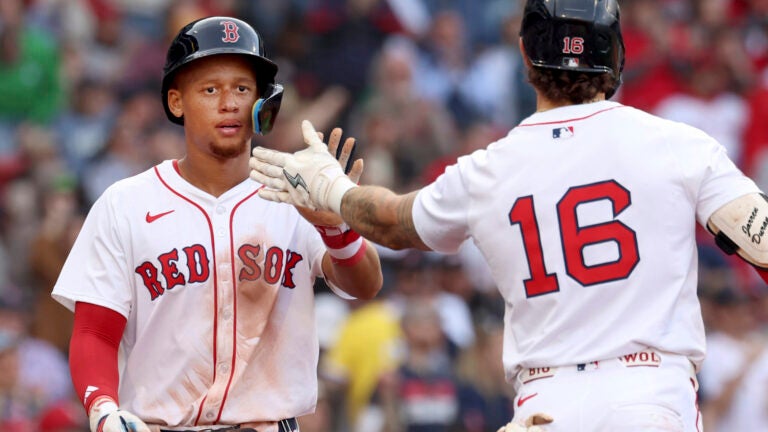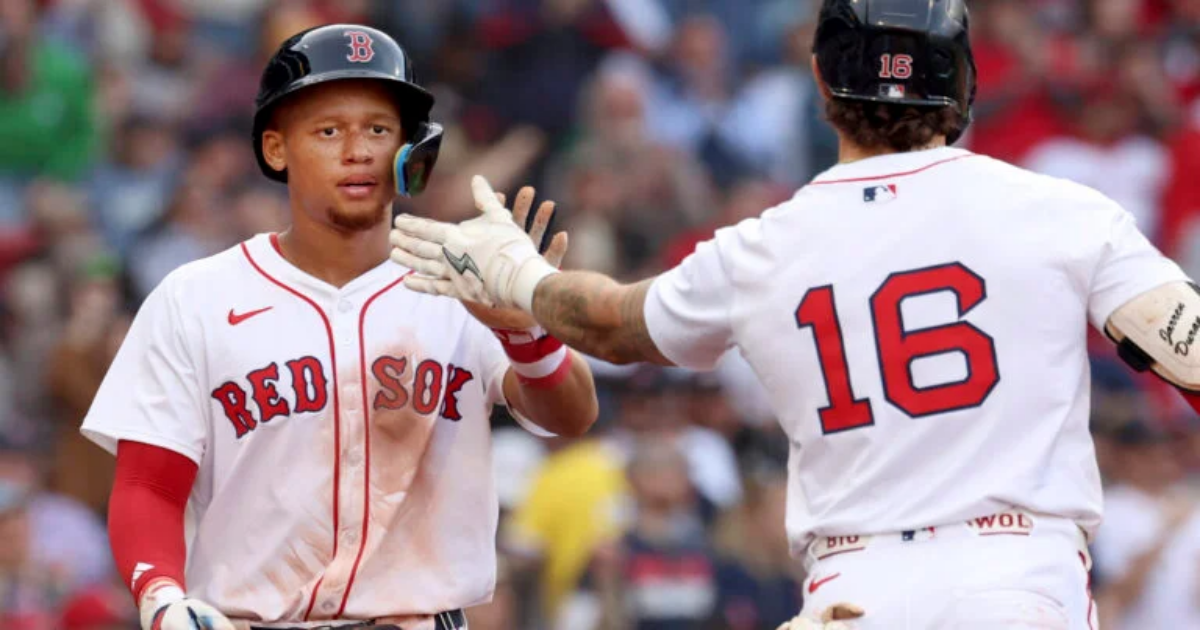Red Sox  Kristian Campbell made his debut at Fenway Park on Friday. (AP Photo/Mark Stockwell)
Kristian Campbell made his debut at Fenway Park on Friday. (AP Photo/Mark Stockwell)
By Conor Ryan
April 4, 2025
The 1975 Red Sox put together a season for the ages — with a team anchored by veterans like Carl Yastrzemski, Carlton Fisk, and Luis Tiant receiving a significant lift from a trio of top players under the age of 24 in Fred Lynn, Jim Rice, and Dwight Evans.
And with 22-year-old Kristian Campbell already delivering at the plate for the 2025 Red Sox, Evans is starting to see some parallels between this current roster and that ‘75 team that put together a run to the World Series a half-century ago.
“We were together as a team, and that’s what I hope these guys do,” Evans said of the ‘75 and ‘25 Red Sox. “Because there’s some talent out there. That these guys can come together as a team? As one unit? They’re capable of doing it.
“So I’m looking forward — I was with these guys in spring training. They’re pretty special, you know? I know they got off to a little rough start, but they’ve got some talent.”
While Campbell — fresh off of inking an eight-year contract extension earlier this week — is already thriving at the big-league level, he may not be the only top Red Sox prospect ready to make some noise at Fenway this summer.
The other two members of Boston’s famed “Big Three” prospect grouping in Roman Anthony and Marcelo Mayer are already settling in at Triple-A Worcester this spring — with the 20-year-old outfielder and 22-year-old shortstop poised to knock on the door at the big-league level in the coming months.
Entering Friday, Anthony had slugged two home runs over his first five games with the WooSox, while Mayer has also connected on two home runs and seven RBI over that same span.
Campbell has risen through Boston’s ranks in short order — opening the 2024 season in High-A ball before punching his ticket to MLB within the year.
But even with his limited sample size, Campbell’s ability to learn on the fly and adjust his approach at the plate has already stood out to Evans.
“I think he’s just going one pitch at a time right now, one play at a time,” Evans said. “I don’t think he’s getting ahead of himself. He’s a really bright kid, a really good kid, and a great athlete, so I love seeing what I’m seeing right now.
“He’s learning stuff, and also he’s gonna know that they’re learning [about] him too. So he’s gonna have to adjust along the way, and he is capable of doing that.”
While youngsters like Campbell, Anthony, and Mayer have already put themselves on the radar of Red Sox fans ahead of the 2025 season, Lynn — who won both AL Rookie of the Year and AL MVP in 1975 — believes that prior Red Sox wunderkinds were able to fly under the radar as they navigated through the big leagues.
But Lynn also added that prospects these days have also benefited from the resources available to them — both on and off the field.
“These guys, as rookies today, they have a lot afforded to them,” Lynn said. “We had none of that. … These guys can look at videos. You guys already know this kid, and you expect a lot of him. .. I was just a 21-year-old out of college, so no one knew us, really, outside of Boston. Everybody knows these kids now.
“And like I said, they have the ability to look at film, and at least they have an idea of what a guy throws at them. We had none of them until we got inside the box. …. And so the learning curve back then was staggering.”
Even with the amount of talent permeating across baseball in 2025, both Evans and Lynn lamented the lack of durability and innings-eating performances in today’s game.
Their former teammate, Luis Tiant, stood in stark contrast to today’s lighter workload for starters — with the Cuban-born righty throwing 187 complete games in his career, including 25 during the 1974 season.
For those keeping track, there were only 26 total complete games across MLB in 2024 — with Tanner Houck recording the lone one for Boston last year.
“[Tiant] was special in a way that — I’m on the bench in spring training and I hear that he throws 96, 97 (mph) but he loses it around the fifth and sixth inning,” Evans said. “Well, Luis threw hard. But what Luis would do in the sixth or seventh or eighth inning is, he changed speeds and changed locations. He pitched. He didn’t have the stuff he started the game with, but he pitched. He knew how to pitch.
“I don’t see that so much in this game. When they get around 100 pitches, it’s time for them to get out. Why? I don’t know. I don’t understand that. But there’s very few that could do what Luis did.”
Lynn was quick to interject. “It’s called finishing a game,” he added.
Get breaking news and analysis delivered to your inbox during baseball season.
